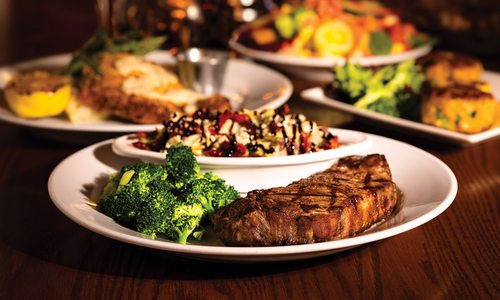Dishes
Insider Secrets to Making Amazing Homemade Stock
It’s time to put the fear of making homemade stock to rest thanks to two local chefs who share some insider secrets to making the best homemade stock ever. Hint: You’ll be shocked at how easy it is.
By Ettie Berneking | Photo by Heather Kane
Feb 2016

Any good cook will tell you fresh is always better, and this is especially true when it comes to stocks. Why then are home cooks so eager to fill their pantries with store-bought chicken, beef and vegetable stock? We took this question to two local chefs whose kitchens rely heavily on homemade stocks and who were eager to share their recipes and tricks for making stocks at home.
“Any good stock comes down to three big factors,” says Anthony Kurpjuweit at Jimm’s Steakhouse & Pub. “Preparation of the bones, the mirepoix and time.” For a lot of us home cooks, making our own stocks sounds like way more work than necessary, but that rich flavor you get in homemade stocks is unbeatable and definitely worth the wait. Plus, as it turns out, it’s not as much work as you might think.
“I usually make my stock at home in a crockpot,” Kurpjuweit says. “Set it to low, and let it go overnight with the lid off. It will reduce by about half, and the more reduced it is, the richer the flavor will be.”
To start any good stock, you need good bones. Both Harter House and Hy-Vee sell stock bones, or you can use leftover bones from rotisserie chickens, ribs, or even that turkey you will be devouring during Thanksgiving. For every half gallon of stock, you need 5 to 8 pounds of bones. Just freeze the bones until you have enough, then roast them in the oven till they are dark brown.
James Stegall, head chef at Farmers Gastropub, actually roasts his beef bones with the meat still on. “Just season the meat with salt and pepper,” he says. “Once the bones are really dark brown, they’re done. But don’t throw away the meat. Tear it off and mix it with some barbecue sauce.”
Once the bones are ready, it’s all about the mirepoix: the chopped up mixture of carrots, celery and onion. The best part: there’s no need to peel anything. You can even leave the onion skins on. It adds more flavor. Cook the mirepoix until the vegetables have really started to caramelize, then add the roasted bones and the water.
This slurry of vegetables and water is the base of any stock, whether you’re making chicken stock, beef stock, vegetable stock or even fish stock. From here, you add in your bones of choice, or omit the bones if you’re making a vegetable stock, and let the mixture simmer for about 4 hours or until it has reduced as much as you want.
The key is patience. Reducing stock can take several hours, and despite the urge to add salt, hold off till the very end. “Once you’ve salted something, you can’t undo it,” Stegall says. “I often don’t add any salt to my stock at all. But if you do want to add salt, do it at the very end and season to taste.”
There you have it! The next time you host dinner club or offer to make Thanksgiving dinner, you can really wow your guests with your culinary prowess. They don’t need to know that making stocks falls on the skill level of easy. All they need to know is that the flavor is on par with mindblowing.












